The Complete Book of 1940s Broadway Musicals
The Complete Book of 1940s Broadway Musicals
Dan Dietz
ROWMAN & LITTLEFIELD
Lanham Boulder New York London
Published by Rowman & Littlefield
A wholly owned subsidiary of The Rowman & Littlefield Publishing Group, Inc.
4501 Forbes Boulevard, Suite 200, Lanham, Maryland 20706
www.rowman.com
Unit A, Whitacre Mews, 26-34 Stannary Street, London SE11 4AB
Copyright 2015 by Rowman & Littlefield
All rights reserved. No part of this book may be reproduced in any form or by any electronic or mechanical means, including information storage and retrieval systems, without written permission from the publisher, except by a reviewer who may quote passages in a review.
British Library Cataloguing in Publication Information Available
Library of Congress Cataloging-in-Publication Data
Dietz, Dan, 1945
The complete book of 1940s Broadway musicals / Dan Dietz.
pages cm
Includes bibliographical references and index.
ISBN 978-1-4422-4527-3 (hardback : alk. paper) ISBN 978-1-4422-4528-0 (ebook) 1. MusicalsNew York (State)New York20th centuryHistory and criticism. I. Title.
ML1711.8.N3D518 2015
792.6'45097471dc23 2014033040
 The paper used in this publication meets the minimum requirements of American National Standard for Information SciencesPermanence of Paper for Printed Library Materials, ANSI/NISO Z39.48-1992. Printed in the United States of America
The paper used in this publication meets the minimum requirements of American National Standard for Information SciencesPermanence of Paper for Printed Library Materials, ANSI/NISO Z39.48-1992. Printed in the United States of America
To the memory of my beloved parents, Celia and Frank
(Mother and Dad, the years of the 1940s were in so many ways your decade.)
Contents
Acknowledgments
I want to take this opportunity to thank my friends Mike Baskin and Ken DePew for their helpful comments and suggestions in the writing of this book.
Introduction
The Complete Book of 1940s Broadway Musicals examines in detail all 273 musicals that opened between January 1, 1940, and December 31, 1949. The musicals discussed are: eighty book musicals with new music; twelve with preexisting music; three operas; seven plays with incidental songs; fifty-seven revues; six personality revues; seven ice revues; four imports; twenty-nine revivals; twelve return engagements; and fifty-six pre-Broadway closings. For a quick rundown of these shows, see the Alphabetical List of Shows, appendix A (Chronology by Season), and appendix B (Chronology by Classification).
The purpose of this book is to present a complete picture of each musical, including technical information and commentary. My goal is to provide a handy reference source that examines technical aspects (cast and song listings, for example) as well as information that sheds new light on both familiar and forgotten musicals of the era. Ive included obscure details about the productions because so often this kind of information personalizes a show and brings it to life. Ive also examined the books and song structures of the musicals, and have noted the occasional curious choices made by a musicals creative team to give very little music to leading characters, decisions that seem antithetical for a musical (see entries for Allegro and Lost in the Stars ).
The decade of the 1940s was a seminal period in the development of the American musical. The 19401941 season is perhaps the most remarkable one in the history of the American musical because within a period of three months three unusually strong book musicals premiered. All of them opened the door to a new chapter in the history of the musical. Cabin in the Sky was an adult fable about good and evil that utilized a generally well-developed book to tell its story, and its songs were used to develop character, further the plot, and create atmosphere. Two months later Pal Joey broke all the rules about musical comedy heroes: Joey was an unmitigated heel, an unpleasant and self-obsessed hoofer who cared about no one but himself. And Lady in the Dark explored the frustrations and unhappiness of a successful businesswoman who undergoes psychoanalysis; the sessions with her doctor develop into dreams and reveries that offer three mini-musicals in which the occurrences in her dreams mirror the events of her past and present.
Two seasons later, Oklahoma! institutionalized the new American musical as one that utilized plot, character, song, and dance to create a unified evening of storytelling. Following Oklahoma! , Broadway offered an array of musicals that built upon the structure and mechanics of the Richard Rodgers and Oscar Hammerstein II hit; some were dramatic ( Carousel , Street Scene , Brigadoon ), some satiric ( Finians Rainbow ), and others old-fashioned larks ( Annie Get Your Gun , Kiss Me, Kate , Gentlemen Prefer Blondes ). But even the lighthearted offerings wove plot, character, song, and dance into a coherent entity.
The decade also saw the beginnings of the concept musical, a genre that flowered in the late 1960s and throughout the 1970s (including most of the Stephen Sondheim musicals of that period). The 1940s offered two flawed but ambitious concept musicals, Allegro and Love Life , and these were the forerunners of Sondheims Company , Follies , and Pacific Overtures as well as Hair and A Chorus Line .
For this book, the technical information includes: name of theatre (including transfers, if applicable); opening and closing dates of production; number of performances (for consistency, Ive used the performance numbers as reported by Best Plays ); the shows advertising tag (including variations of the tag as used in a shows programs and flyers); names of book writers, sketch writers, lyricists, composers, directors, choreographers, musical directors, producers, and scenic, costume, and lighting designers. All the cast members are included, and each performers name is followed by the name of the character portrayed (performers names in italics reflect those billed above the shows title).
Also included are the number of acts; for book musicals, the time and locale of the show; and the titles of musical numbers are given by act (following each song title is the name of the performer, not the character, who introduced the song). If a musical is based on source material, such information is cited. Because programs sometimes didnt include every musical number, the song lists in this book reflect every musical sequence that was performed in a show, whether or not it was listed in the program. Also, if a song is known by a variant title, the alternate title is given in parentheses.
The commentary for each musical includes a brief plot summary (in the case of revues, representative sketches are discussed); brief quotes from the critics; informative trivia; details about London productions as well as New York revivals; and data about recordings, published scripts, and film, radio, television, and video versions. In most cases, the commentary also includes information regarding the shows gestation and pre-Broadway tryout history. Winners of the Tony Award, the New York Drama Critics Circle Award, and the Pulitzer Prize are also cited. Throughout this book, bolded titles refer to productions that are discussed elsewhere in the text.
The book includes eight appendixes: a chronology by season; chronology by classification; a discography; a list of Gilbert and Sullivan revivals; a filmography; a special chronology of selected nonmusicals that opened during the decade and included incidental songs, dances, or background music; a list of published scripts; and a list of theatres where the musicals were performed.
The book also includes a bibliography. Virtually all the information in the book is drawn from such source materials as programs, souvenir programs, window cards (posters), flyers, recordings, scripts (both published and unpublished), and contemporary reviews.
Next page

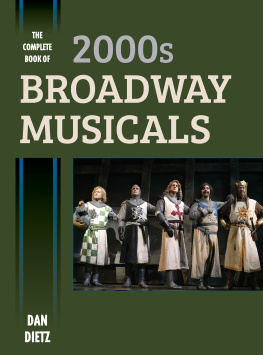
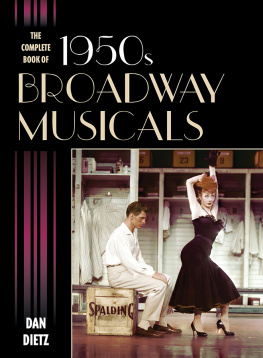
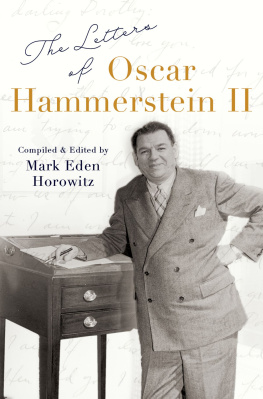
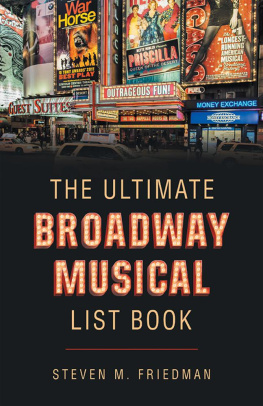
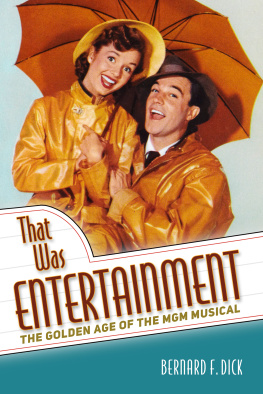



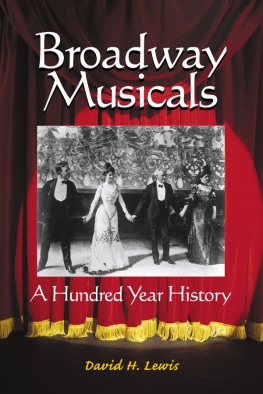
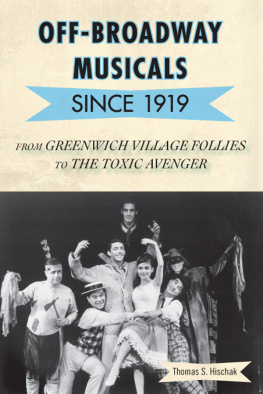
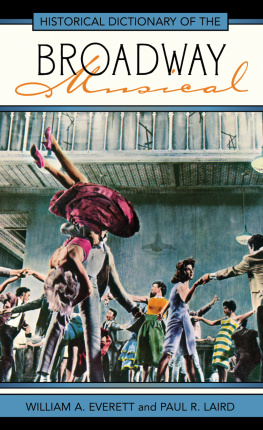
 The paper used in this publication meets the minimum requirements of American National Standard for Information SciencesPermanence of Paper for Printed Library Materials, ANSI/NISO Z39.48-1992. Printed in the United States of America
The paper used in this publication meets the minimum requirements of American National Standard for Information SciencesPermanence of Paper for Printed Library Materials, ANSI/NISO Z39.48-1992. Printed in the United States of America